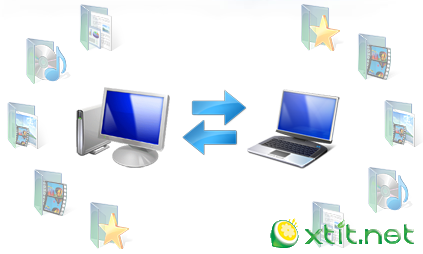Windows Live Sync Application Example: Real-time Server Backup
Regarding the Windows Live Sync service, I won't say much more in this article for now. For those who still don't understand, I recommend reading gOxiA teacher's introduction article: "Live Sync - An Excellent P2P Synchronization Software" and "Random Talk on Windows Live Sync Usage Experience."
livesync_thumb
Since Windows Live Sync has such excellent synchronization capabilities, we must make full use of its value. Synchronization is to serve data. What kind of data is most valuable? Are they the YY艳photos you've cherished on your hard drive for years? Or are they your encrypted A-level videos? Haha, this is a place to discuss professional topics. So what data is the most valuable? Of course, it's the data on the server! How does Windows Live Sync serve our server data?
First, let me ask a question: How do you back up your server data? Connect a mobile hard drive and copy it? It's good if you have this habit. But this cannot be done in real-time. When there is a need for real-time backup, would you go to the server room to copy every few seconds? Why not use Windows Live Sync?
Install Windows Live Sync on both the server in the server room and your backup machine, and log in with your work-dedicated Live ID. Then set up the important data directories on the server that need real-time synchronization.
image
Open Windows Live Sync on the server and click "Create Personal Folder." Note that such important data should never be set as "Create Shared Folder," otherwise your server data will be published externally. Select the directory on your server that needs data synchronization, then click "Synchronize folder here." For example, the wwwroot directory.
image
Then go to your office backup machine and open Windows Live Sync, where you will see a wwwroot directory.
image
Click it, then choose "Add Computer."
image
Then select the office backup machine and specify a backup location, and you're all set. Any changes made to files on the server will be automatically synchronized by Windows Live Sync. Of course, if you modify files on the backup machine, they will also be synchronized to the server. If you're not sure, you can also set up multiple computers to synchronize together. This way, you shouldn't worry about failures such as the server hard drive containing important data crashing, right?
By the way, from the perspective of server data security, this real-time synchronization method is only effective against accidental "hard" factors. It is ineffective against "soft" factors like hacker intrusions and data tampering. Because data synchronization is in real-time. If hackers intrude and modify the server data, the data on your backup machine will also be synchronized. Therefore, while backups are important, they are absolutely not the only security measure.
Technorati Tags: server, security, data, synchronization, backup
